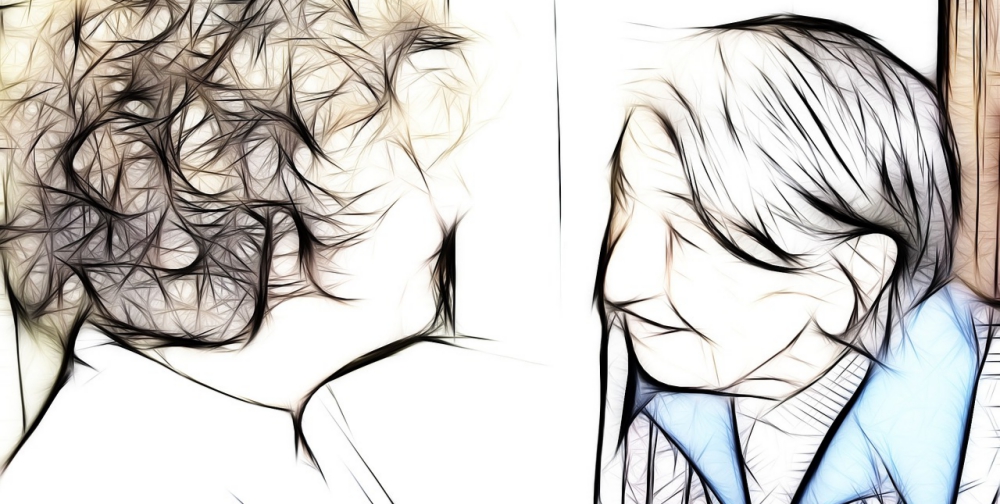Living away from your family feels nice and free, but let’s be honest, as we grow up, we start to think, or worry about the elderly in the family. “How are they doing today?”,” Have they took the pills today?”, “Grandpa has been living alone for 5 years…”. “Did my grandma turnoff the gas?…” You can’t sleep.
From a macro view, the whole world is getting old: The UK will see a massive 23% increase in those aged 65+ between 2010 and 2018. By 2035, numbers of people aged 65+ will rise by just under 7 million – from 11 to 16.9 million. By 2050 the number of senior citizens in China will reach the peak at 400 million, which is 34.9% of total population, whereas Japan has already reached 32% in 2013.
The aging of population comes with large population base, rapid growth, high average age, disability and empty nest effect, while the demand for life, rehabilitation, medical care and spiritual service of the elderly has become increasingly prominent. The Internet of Things (IoT) is helping society facilitate the challenge.
IoT smart home devices/systems are taking care of elderly from 3 different aspects: precaution/reminding, rescue and comfort.
IBM has introduced cognitive and IoT technology to home field, through the deployment of a variety of sensors to the elderly home environment, the system can track user daily activities and body performance data and therefore build the “scene”. With the enrichment of personal data, the system will be able to build customized modes and timetables. The function of reminding or precaution can be reflected in very detailed aspects, for example, the self-learning stove alarm learns an individual’s cooking habits within a specific house by picking up data. Falling asleep when – or simply forgetting that – the stove is left on is incredibly dangerous, and this small device aims to send alerts before toxic gases are released/before a fire starts without being a hindrance. Also, Philips HUE motion sensor can detect footsteps in the dark and light up the smart lights in the hallway, therefore making the journey to the toilet easier.

Even if misfortunes happen, the smart devices(motion sensor) and warble devices, such as the latest Apple Watch,will sense and report the incident, whether it is because of fall down or drop of stroke, the initial symptom will be reported to both guardians and emergency center at the first place.
The IoT caring system will bring people multiple surprises, in addition to real-time health care, it can take care of the spiritual needs of the elderly. When the elderly have communication needs, the smart device will list the background information of the elderly in the corresponding database, including interests, hobbies, habits, personality or recommend interesting places, nice TV programs or rich community activities. Most importantly, your video/voice memo will be delivered.
In the future, development of both digital technology and health care will tip the scale toward precaution/reminding, as we will do our best to prevent any incident. And, most importantly, we make money and take care of our family.
Related articles:
https://www.ibm.com/blogs/internet-of-things/elderly-independent-smart-home/
https://www.aplaceformom.com/blog/the-internet-of-things-iot-intends-to-transform-senior-care/
https://www.qorvo.com/design-hub/blog/smart-homes-for-seniors-how-iot-helps-aging-parents/


That is a really interesting topic Zhuo! What you have covered in your article is definitely something that has crossed everybody’s mind for their beloved ones. What about the life outside the “safety” of home though? Unfortunately, the traditional transportation services are not able to provide effective access to elderly people or generally people with disabilities. IBM, having this concern in mind, has teamed up with the Consumer Technology Association Foundation and Local Motors with aiming to produce a personalized self-driving vehicle, adaptive to each person’s unique abilities, named Olli. Passengers can interact with Olli as they wish, in order for their experience to be as much pleasant and comfortable as possible. Few of Olli’s features include remote vehicle monitoring, alert systems, 360-degree vision by multilayer sensors and seamless integration into any transportation environment making it a lot safer for passengers. Olli connects with an application, where passengers (or other people on behalf of the passengers) can register and book their ride. Dynamic routing is also available to optimize trips according to the passenger’s needs. You can find further information about Olli on this link: https://localmotors.com/meet-olli/. Would you trust this service for your loved ones easy and safe transport?